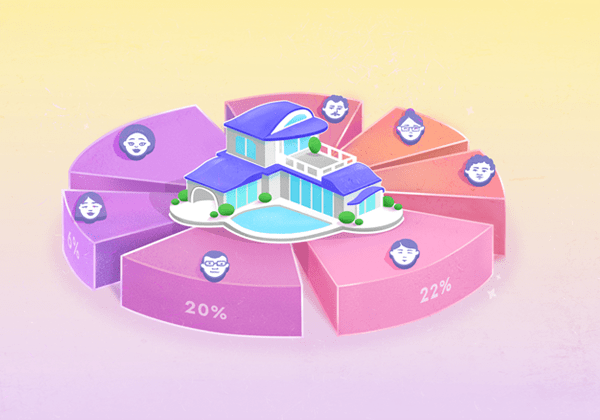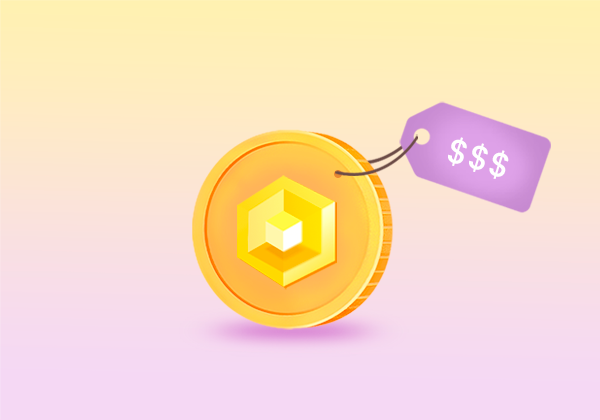
What is Blockchain, and How Does It Work?
Blockchain technology is the foundation for developing cryptocurrencies and decentralized finance (DeFi). As these elements become increasingly common, it's important to have a good understanding of them. With this in mind, we have prepared an article on what blockchains are, who the miners are, and how transactions are made on the network.
What is Blockchain?
Let's begin with what is blockchain. It is a distributed database that contains information about all transactions made by participants in the system. The information is stored in a chain of blocks, with each block containing data about transactions. Each new block contains data about the previous block.
To identify and protect transactions, tags are used, which are implemented by partitioning the database into a chain of special blocks, each of which contains, among other things, a hash of the previous block and its serial number.Unlike conventional databases, these records cannot be changed or deleted, only added.
Blockchain is based on three elements:
- anonymity;
- decentralization;
- security;
Blockchain means there is no central governing body and no single data repository, as devices from different parts of the world support the system (miners). This eliminates the need for a single server, making the technology decentralized.
Blocks are added without identification. Any user can connect to the database as a miner using their computer without revealing their name or other personal information. This makes the technology completely anonymous.
How was Blockchain Created?
Let's learn about how blockchains are created before moving on to a description of the technology process.
Blockchain technology was initially conceptualized by Stuart Haber and W. Scott Stornetta in 1991 as a solution to prevent retroactive or fraudulent changes in digital documents by timestamping them. However, this idea was not utilized and the patent was overlooked in 2004.
Towards the end of 2008, an anonymous person under the name Satoshi Nakamoto circulated a white paper via email, introducing the idea of a decentralized, peer-to-peer electronic cash system known as Bitcoin. This was the first blockchain, of which there are now more than 1,000 (including various modifications).
How Does Blockchain Work?
The purpose of blockchain technology is to allow each participant in the network to have access to a distributed database. The blockchain does not store the data itself but records events (transactions) in their chronological sequence. All new records are checked for authenticity, and most network members must confirm them before they can be entered into the blockchain. Records are grouped into blocks, which are combined into a chain.
Once data is on the blockchain, it cannot be changed or deleted without compromising the integrity of the blockchain. Because this database has no single center or governing body, all network members process and confirm every transaction in it, as we mentioned earlier. Therefore, it is virtually impossible to fake records.
Blockchain can operate both on a public (open) network, to which any user has access, and on a private (closed) network, such as a corporate network in the case of sensitive data. Private versions of blockchain can have different levels of access for users and different levels of complexity for encrypting information. The best-known example of a public blockchain is Bitcoin and other cryptocurrencies. Corporations use blockchain not only in the financial sector but also in other sectors, such as the entertainment industry (for issuing tickets) and healthcare (to protect patient data).
The blockchain explanation distinguishes three types of consensus algorithms that make blocks work and determine how they are formed in a decentralized network:
- PoW (Proof-of-work): the right to certify a block is given to a participant based on their performance of some fairly complex work that meets predetermined criteria.
- PoS (Proof-of-stake): the right to certify a block is given to an account holder when the number of their funds and the period of possession meet the specified criteria. The formulas for calculating the criteria may vary slightly.
- PoS + PoW: a hybrid of PoW and PoS, where blocks can be certified via calculated PoS criteria and PoW overshoot.
There are other algorithms as well, but the ones described above are used most often in creating cryptocurrencies and DeFi structures. All this will help you understand how the blockchain works, and what types it is divided into.
Conclusion
Blockchain is not only about cryptocurrencies and mining. This technology has many possibilities for the future, especially for DeFi, web development, and the financial industry. Also, the Web 3.0 that is being developed will be fully or partially based on this. Therefore, it is important to understand it to be able to use it to your advantage in the future. For example, in professional development or in making money, the crypto industry has a wide pool of investment and income opportunities. Take advantage of this opportunity!
► Sabai Academy — a place where studying blockchain, crypto, fractional ownership, and real estate investments becomes a catalyst for capital growth!
Sabai Academy
Join our FREE courses and get REWARDS IN CRYPTO!
Related Articles

What is Fractional Ownership, and How Did It Come About?

FULL GUIDE: How to Buy $SABAI token

